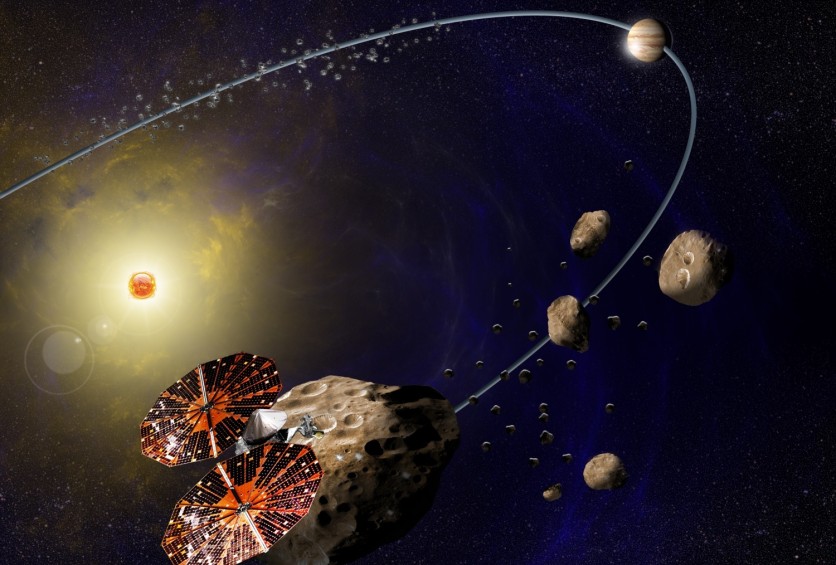The National Aeronautics and Space Administration (NASA) is ready to launch its 12-year-long mission known as Lucy.
The Lucy spacecraft is set to launch on October 16 from the Cape Canaveral Space Force Station in Florida.
The Lucy mission will help scientists understand how the solar system came to be through asteroids known as the Trojans. Specifically, the mission will focus on the Trojan asteroids orbiting before or after the planet Jupiter.
Despite its October 16 launch, the Lucy mission will have to wait until August 2027 to make its first Trojan asteroid flyby. The last flyby is scheduled to take place in March 2033.
NASA's Lucy Mission Is Ready To Launch
NASA's Lucy asteroid mission is ready to launch on October 16 at 5:34 a.m. EDT. The spacecraft will be aboard a United Launch Alliance Atlas V rocket. The launch will take place in Cape Canaveral Space Force Station in Florida.
According to a report by Space, it is not ideal to delay the launch of the spacecraft to the next day. "The spacecraft's Sunday (Oct. 17) opportunity offers just a 50% chance of cooperative weather as tall cumulus clouds and rain showers threaten," the report explains.
October 18 would be a slightly better choice should the October 16 launch date not push through as the day "offers 60% odds of favorable weather for launch due to lingering showers and winds."
Once it has been launched to space, the Lucy spacecraft is scheduled to conduct two flybys of our planet in order to adjust its trajectory.
Related Article: NASA's Lucy Mission Progresses to Spacecraft Assembly to Assess Trojan Asterioids
What Is the Lucy Mission?

The Lucy mission is a 12-year-long mission that will focus on studying the asteroids that "orbit ahead of or behind Jupiter," according to the Space report. The mission aims to help scientists understand better how the solar system came to be.
The mission will focus on eight different asteroids. Most of which are classified as Trojan asteroids, which are described as asteroids that are "trapped in gravitationally stable points of a planet's orbit."
Lucy is scheduled to make its first asteroid flyby in April 2025. The spacecraft will swing by a main-belt asteroid known as the Donaldjohanson. Its first Trojan asteroid flyby will take place in August 2027 while the last one is set to take place in March 2033.
How To Watch the Launch
The Lucy mission is a daring yet exciting mission not just for scientists but for those who are interested in space exploration. If you are interested in catching the launch of the spacecraft live, you will be able to do so.
According to a separate report by Space, the live coverage of the Lucy mission launch is set to start at 5 a.m. EDT.
The live launch coverage of the Lucy mission will be available on NASA Television, the NASA app, and NASA's different social media channels. The launch can also be streamed via the Space website.
Also Read: Lockheed Martin Spacecraft Set to Go on a 12-Year Journey to Study Trojan Asteroids Near Jupiter
This article is owned by Tech Times
Written by Isabella James
ⓒ 2025 TECHTIMES.com All rights reserved. Do not reproduce without permission.




